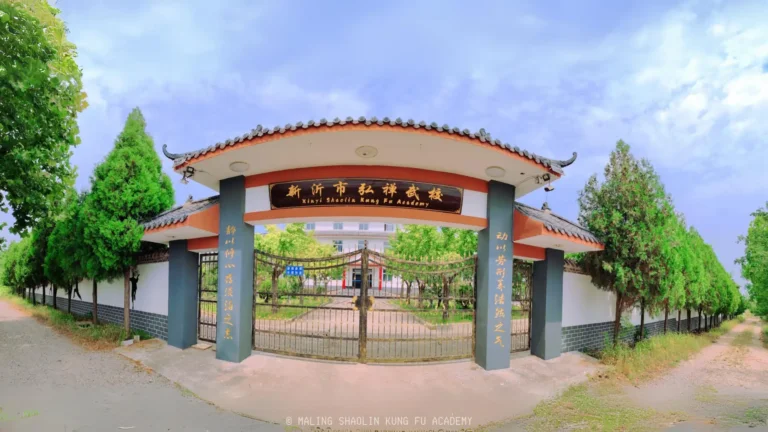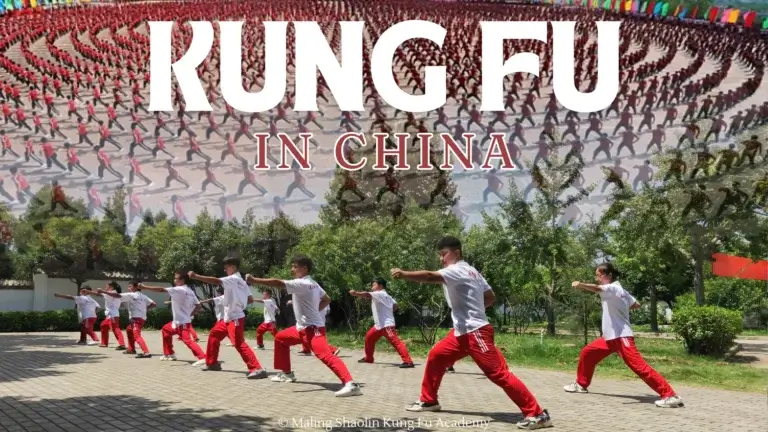
The Shaolin Temple, nestled in the Songshan Mountains of Henan Province, China, is renowned for its rich history and dual traditions of Buddhism and martial arts. Within its sacred grounds, both Buddhist monks and Shaolin warrior monks live and practice, each following distinct paths of spiritual and physical cultivation, providing a fascinating glimpse into two distinct yet intertwined traditions. Read on to explore the daily lives, rites of passage, and unique practices of these monks revealing a rich tapestry of devotion, discipline, and heritage that continues to captivate and inspire.
A Difference In Monks
Buddhist monks can be found in various regions across the world, each embodying the diverse traditions and practices of Buddhism. In China, there are multiple sects such as Chan (Zen) Buddhism, Pure Land Buddhism, and Tibetan Buddhism, each with its unique rituals, teachings, and monastic codes. Outside of China, Buddhism has taken root in countries like Thailand, Japan, Sri Lanka, and Myanmar, with Theravada Buddhism being predominant in Southeast Asia and Mahayana Buddhism flourishing in East Asia. These regional differences lead to a rich variety of practices, from the meditative and austere lifestyle of Japanese Zen monks to the vibrant rituals and chanting of Tibetan monks. Despite these differences, all Buddhist monks share a common dedication to the principles of mindfulness, ethical living, and the pursuit of enlightenment. So what’s the difference between Chinese Buddhist Monks and Shaolin Monks?
Buddhist Monks
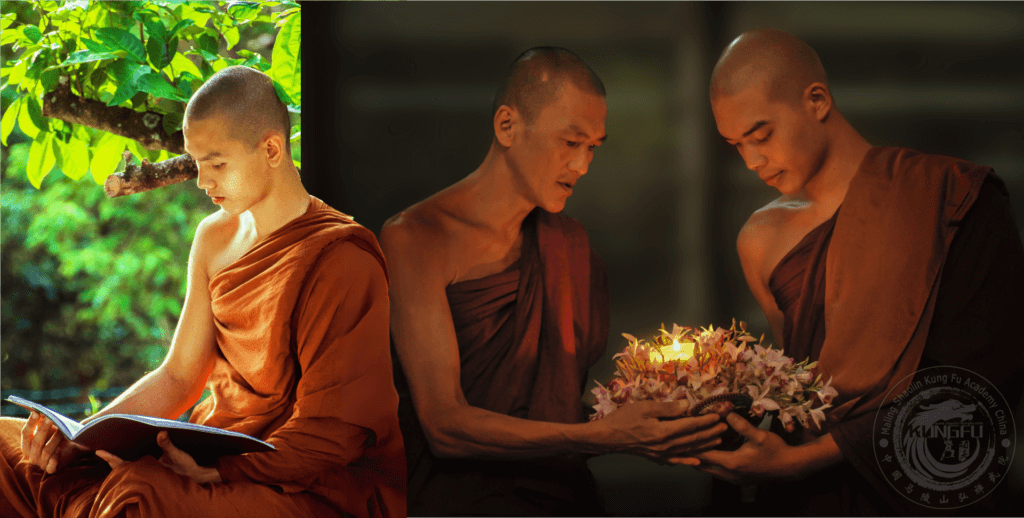
Religious Affiliation: Buddhist monks adhere to the teachings and practices of Buddhism, a spiritual tradition that encompasses various schools and sects. Buddhism originated in India and spread to other parts of Asia, including China, where it became one of the major religions.
Monastic Orders: Buddhist monks belong to monastic orders or communities (sangha), where they take vows of celibacy, poverty, and obedience. They devote their lives to the pursuit of enlightenment and the alleviation of suffering, following the Noble Eightfold Path and other Buddhist principles.
Spiritual Practices: Buddhist monks engage in a wide range of spiritual practices, including meditation, chanting, sutra recitation, and ritual ceremonies. They seek to cultivate wisdom, compassion, and mindfulness through their practice, aiming to attain Nirvana or liberation from the cycle of birth and death.
Roles and Responsibilities: Buddhist monks serve as spiritual guides, teachers, and custodians of Buddhist teachings and traditions. They often reside in monasteries or temples, where they lead religious services, offer counseling to the faithful, and participate in community outreach and charitable activities.
Shaolin Monks
At the Shaolin Temple, the term “Shaolin monk” encompasses both wénsēng (Shaolin Buddhist or ‘Literary’ monks), who focus on spiritual practices and meditation, and wǔsēng (Shaolin warrior monks), who are dedicated to the practice of martial arts alongside their religious duties. See the section below ‘Monks of the Shaolin Temple’ for more explanation on wénsēng vs wǔsēng.
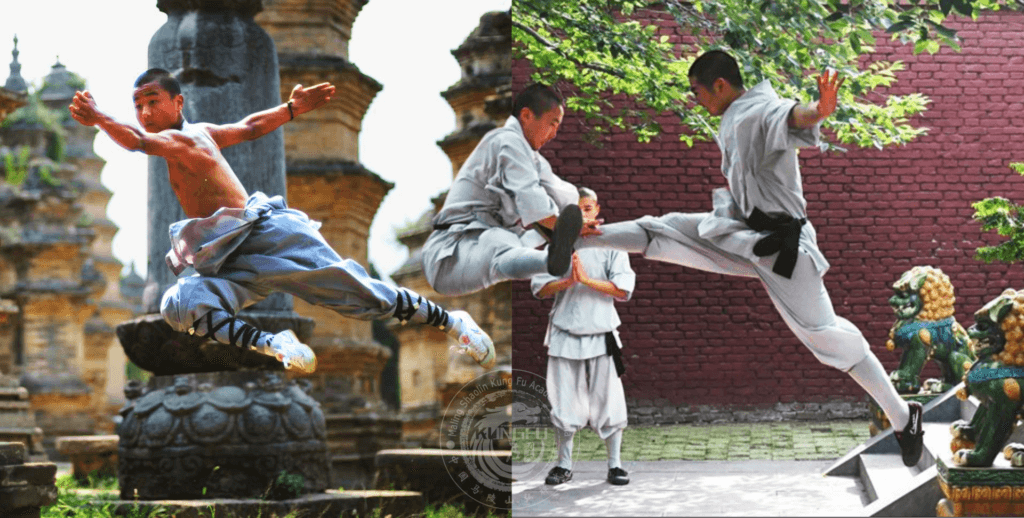
Origins and Tradition: Shaolin monks are a subset of Buddhist monks who belong to the Chan (Zen) school of Buddhism and are associated with the Shaolin Temple, located in Henan Province, China. The Shaolin Temple is renowned for its rich history, martial arts tradition, and cultural significance.
Martial Arts Training: Unlike traditional Buddhist monks, Shaolin Warrior monks are famous for their expertise in martial arts, particularly Shaolin Kung Fu. They undergo rigorous training in martial arts techniques, Qigong (energy cultivation), and weapons proficiency as part of their spiritual discipline and physical cultivation.
Integration of Buddhism and Martial Arts: Shaolin Warrior monks integrate Buddhist principles of compassion, mindfulness, and non-violence with the physical discipline of martial arts. They view martial arts training as a means of self-defense, physical fitness, and spiritual cultivation, emphasizing discipline, respect, and self-control.
Cultural Impact: Shaolin Warrior monks have become cultural icons and ambassadors of Chinese martial arts, renowned for their dazzling performances, feats of strength, and demonstrations of skill. They continue to inspire martial artists and enthusiasts around the world, promoting the values of discipline, perseverance, and harmony.
While both Buddhist monks and Shaolin monks share a commitment to spiritual practice and moral discipline, Shaolin monks distinguish themselves through their emphasis on martial arts training, cultural heritage, and association with the Shaolin Temple.
Monks Of The Shaolin Temple
At the Shaolin Temple, the monks are referred to as Wénsēng (文僧) and Wǔsēng (武僧). These terms distinguish between monks who focus primarily on scholarly pursuits and those who emphasize martial arts training.
Wénsēng (文僧) – “Literary Monks”
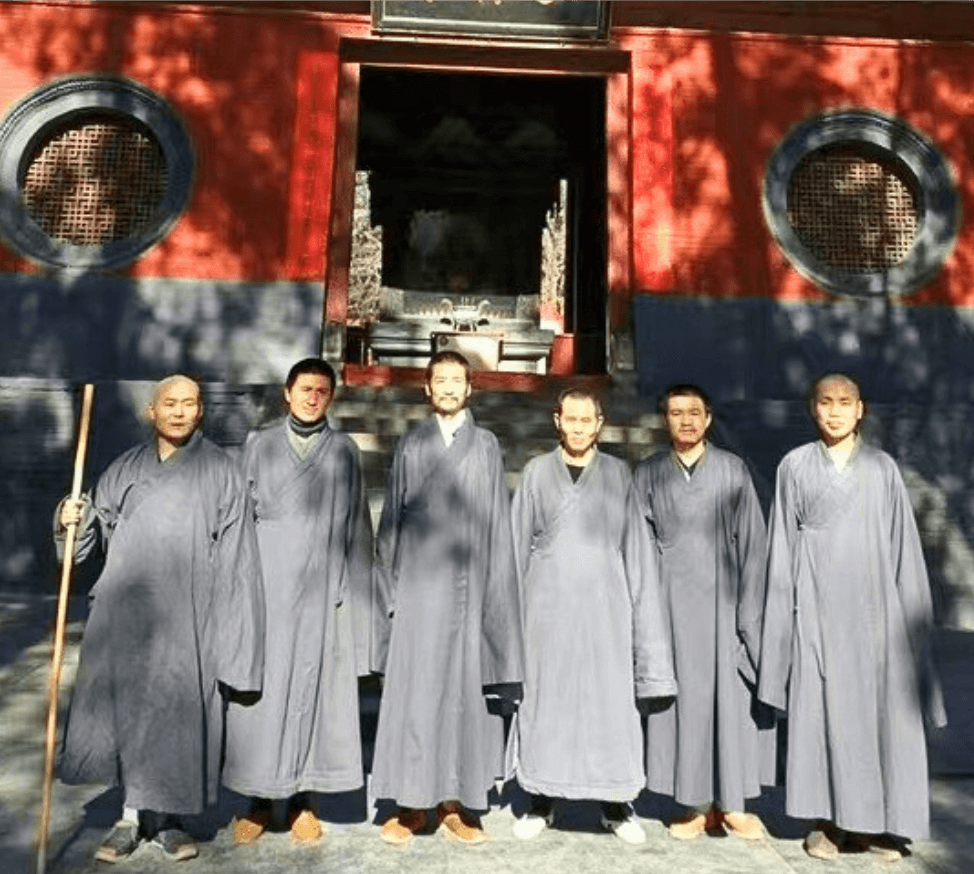
These monks dedicate themselves to scholarly activities, such as studying Buddhist scriptures, engaging in meditation, and performing religious rituals. They are responsible for preserving and teaching the spiritual and philosophical aspects of Buddhism. The wénsēng embody the intellectual and contemplative side of monastic life at the Temple.
While the Shaolin Temple is renowned for its martial arts tradition, these Literary monks play an integral role and are distinct from their counterparts in other Buddhist temples. These Literary monks (wénsēng) follow traditional Buddhist practices and monastic rituals, however, their cohabitation with Shaolin warrior monks and the unique environment of the Shaolin Temple infuse their daily lives with a distinctive blend of spiritual and martial elements.
The Literary monks at the Shaolin Temple typically do not train in martial arts like the Shaolin warrior monks. While both groups reside within the same temple grounds and share certain aspects of daily life, their focuses differ significantly. The primary goal of the Literary monk is spiritual enlightenment through the teachings of Buddhism.
Wǔsēng (武僧) – “Martial Monks”
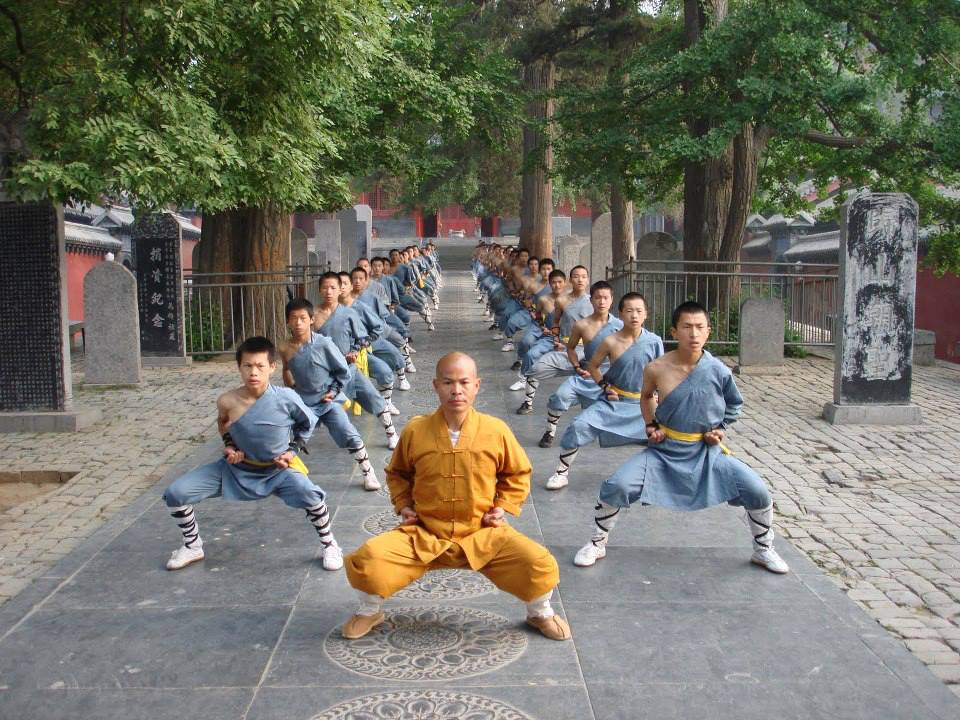
These monks focus on the physical aspects of Shaolin training, including martial arts, qigong, and other forms of physical conditioning. The wǔsēng are the famed warrior monks who perform martial arts demonstrations and participate in rigorous training regimes that integrate spiritual discipline with martial prowess.
The rigorous training of the Warrior monks (wǔsēng) includes not only physical conditioning and combat techniques, but also the cultivation of mental discipline and inner strength. Their strong emphasis on Chinese martial arts and cultural heritage is reflected in their training, performances, and public image. While they also follow Buddhist principles and teachings like their wénsēng brethren, they are primarily recognized for their martial prowess and contributions to Chinese martial arts.
“Wén Wǔ Shuāng Quán” (文武双全)
In Chinese culture, the ideal of balancing civil (文) and martial (武) virtues is ancient and well-respected. This balance is often summarized in the saying: “文武双全” – “Wén wǔ shuāng quán.”
This phrase means “proficient in both literary and martial arts,” and is used to describe someone who possesses both intellectual and physical excellence. It reflects a holistic approach to personal development, valuing the cultivation of both the mind and the body.
In the context of the Shaolin Temple, a monk who is both a wénsēng and a wǔsēng would be someone who embodies the full spectrum of Shaolin training, excelling in meditation, scripture study, and martial arts. This dual expertise is rare and highly regarded, as it requires immense dedication and mastery of diverse disciplines. This dual excellence is highly esteemed and reflects the traditional ideal of a balanced and harmonious life.
Becoming A Buddhist Monk
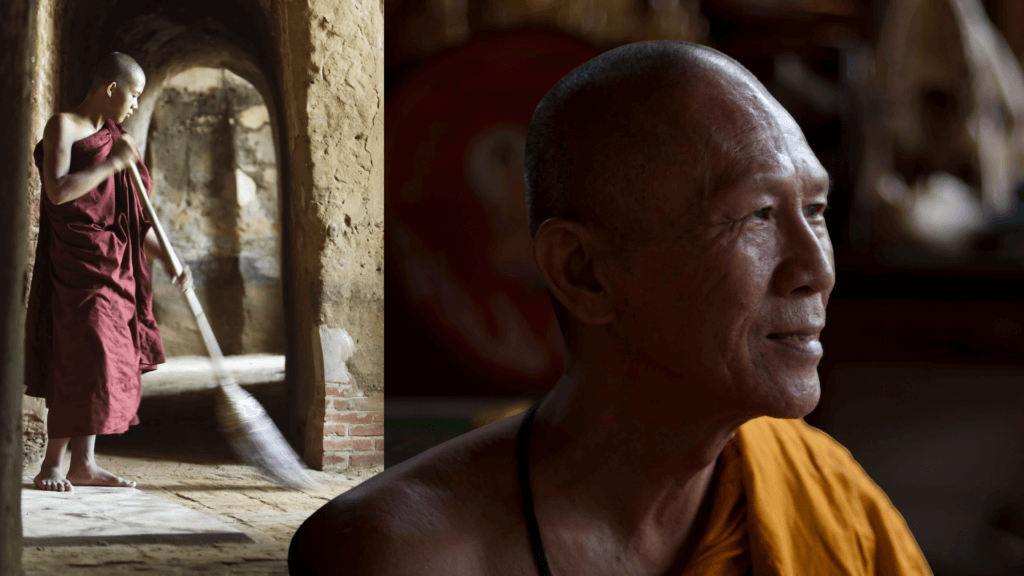
But why would an individual hoping to become a Buddhist monk opt for the Shaolin Temple over another solely monistic-focused temple? For some Buddhists, the draw to the Shaolin Temple lies in its rich heritage and the holistic approach to enlightenment that incorporates physical discipline alongside spiritual practice. The opportunity to practice Buddhism in an environment steeped in centuries-old traditions of both meditation and martial arts offers a unique and enriching experience that attracts many practitioners seeking a comprehensive path to spiritual and physical well-being.
Perhaps the most significant factor in the presence of Buddhist monks at the Shaolin Temple is the unique process of becoming a monk. In modern times, after training and performing for several years, a Shaolin Warrior Monk (wǔsēng) can choose to continue on the warrior path or transition to becoming a Buddhist Literary monk (wénsēng). This process explains why most Buddhist Literary monks at the temple are older. While this is the most common route to becoming a Buddhist monk at the Shaolin Temple, there are two other avenues.
The first alternative involves individuals seeking a new purpose in life after experiencing disillusionment with material pursuits such as money, power, relationships, or indulgence in pleasures. They turn to the temple in search of inner peace and enlightenment. The second, less common today, harkens back to times of poverty and war in China, when the Shaolin Temple served as a place of refuge and welfare. During these times, orphans were occasionally taken in, or families unable to provide for their children would surrender them to the temple for a better future.
Life At The Temple
Both Warrior monks and Literary monks at the Shaolin Temple adhere to strict dietary guidelines as part of their monastic vows and spiritual practice. This often includes abstaining from meat, alcohol, and strong-flavored foods like garlic and onions. The specific dietary restrictions may vary slightly depending on the individual or master, but the underlying principle is to cultivate mindfulness, compassion, and non-attachment through mindful eating and simplicity.
However, while the Buddhist/Literary monks make this vow for life, Warrior monks typically only follow these dietary restrictions while on temple grounds. They are held to different standards as, in both past and present, the Warrior Monks need more energy to train and fight than can typically be acquired from the simple meals of monkdom.
The two sects interact at the Temple for morning Buddhist studies, ceremonies, temple chores, and meals, though nowadays meals are often picked up from the dining hall to eat elsewhere due to capacity issues. During the morning Buddhist studies, all monks of the Shaolin Temple meet in a spacious hall with a large Buddha statue. There, they conduct harmonious chanting and prayer, prayer bead counting, or reading scriptures in silence.
You can read more about the strict temple life of a Shaolin Warrior Monk in Master Bao’s interview: Life As A Shaolin Temple Disciple.
Rites Of Passage
One particular difference of note is that of the dedication or rite of passage ceremonies for becoming a Buddhist monk and a Warrior monk:
Shoujie (受戒)
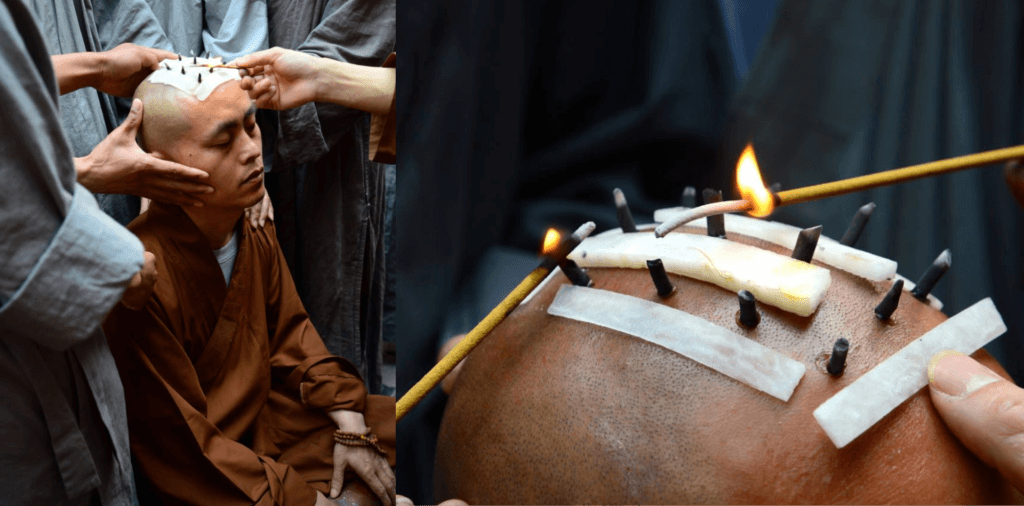
Shoujie, or ordination, is the process through which a Buddhist adherent leaves home, family, home, and career to join a Buddhist temple. Those who leave home engage in daily practices such as eating vegetarian meals, reciting scriptures, and cultivating discipline, concentration, and wisdom, all with the goal of achieving liberation. After receiving the Ten Precepts, one becomes an official monk, fully dedicated to the spiritual path.
The process is finalized through jieba, the formal ceremony in which an individual becomes ordained as a Buddhist monk in the Chan tradition. During the Jieba ceremony, the candidate undergoes various rituals and vows, including shaving their head, donning monastic robes, marking their scalps by burning moxa (mugwort) sticks, and receiving the precepts of monastic life. The ceremony symbolizes the renunciation of worldly attachments and the commitment to a life of spiritual practice, compassion, and ethical conduct according to Buddhist teachings.
Bai Shi (拜师)
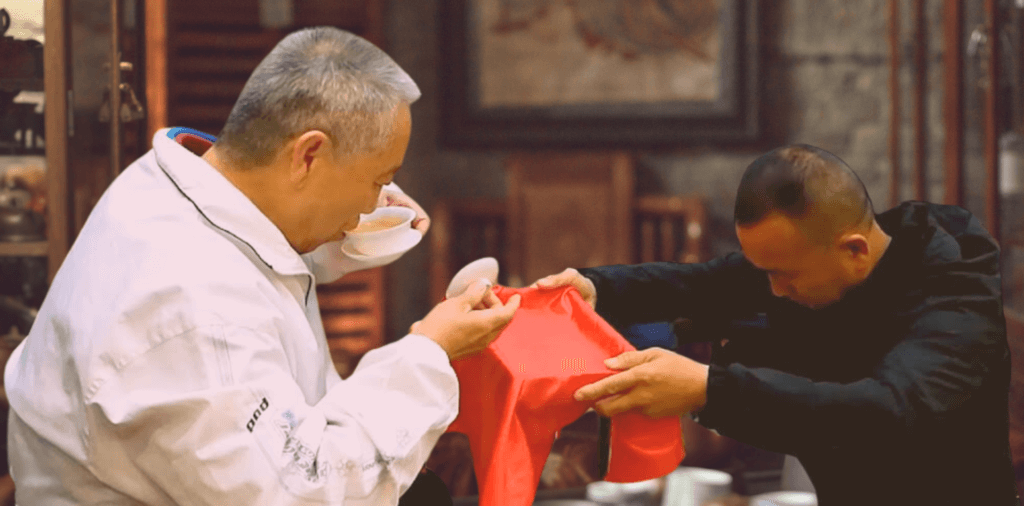
Bai Shi, or the “bowing ceremony,” is the traditional initiation ritual for becoming a disciple or student of a master in the Shaolin tradition. During the Bai Shi ceremony, the disciple bows before the master as a sign of respect and submission, formally requesting to become their student. The master may then impart teachings, instructions, or guidance to the disciple, marking the beginning of their apprenticeship and training under the master’s guidance. The Bai Shi ceremony symbolizes the disciple’s commitment to learning and following the teachings of their master, as well as their dedication to the path of Shaolin martial arts and philosophy.
While both Jieba and Bai Shi ceremonies mark important milestones in the lives of Buddhist monks and Warrior monks, respectively, they serve different purposes within their respective traditions. Jieba signifies the formal ordination into the monastic community and the adoption of Buddhist vows, while Bai Shi represents the formal acceptance of a disciple into the lineage and tutelage of a Shaolin master.
The Significance Of Color
At the Shaolin Temple, the colors of the monks’ clothing have symbolic meanings and can indicate their roles or stages of training. Color alone is not a separator of the Buddhist vs Warrior monks, as you will see below. You may have noticed the header image of this blog post shows two pictures of monks both wearing yellow, though slightly different. In general, the robes of Buddhist Literary monks tend to be looser fitting while those of the warrior monks are often more fitted or secured with belts. However, in the case of ceremonial wear, this is not always the case. Here’s a general overview:
Grey Robes:
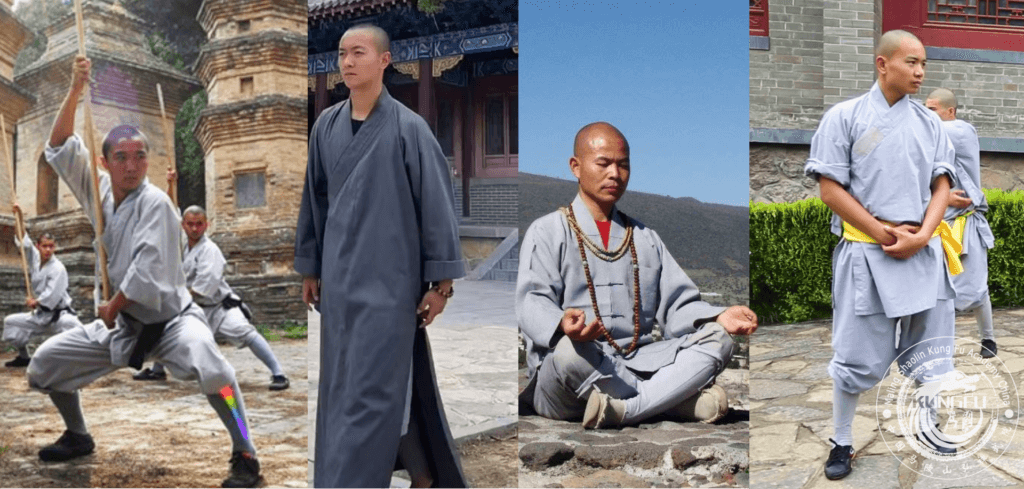
- Literary Monks: Typically, grey robes are worn by Literary monks at the Shaolin Temple, representing simplicity, humility, and a focus on spiritual practices. Grey is a traditional color for Buddhist monastic attire and signifies renunciation of worldly pleasures and a commitment to the monastic life.
- Warrior Monks: Warrior monks also wear grey robes, particularly during their early stages of training. The grey color in this context still symbolizes humility and discipline.
Yellow Robes:
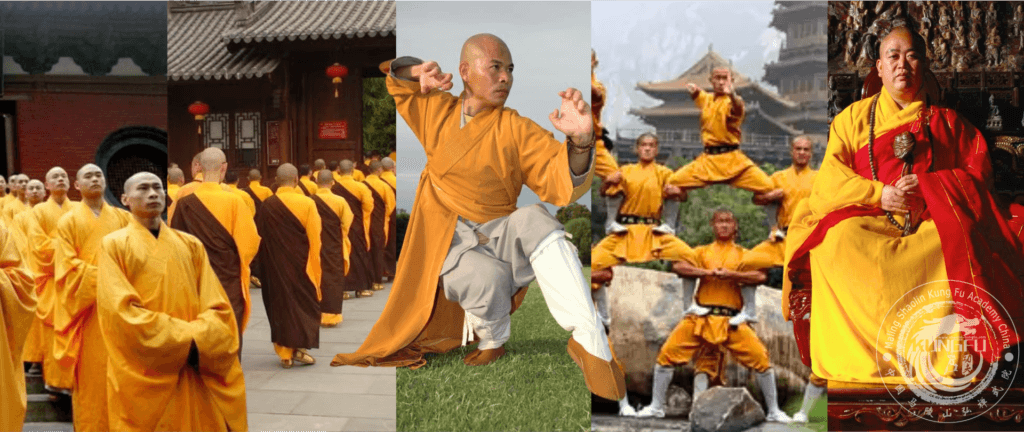
- Literary Monks: Yellow or saffron robes are often associated with higher-ranking Buddhist Literary monks or those who have achieved a certain level of spiritual advancement. Yellow is considered a sacred color in Buddhism, representing enlightenment, wisdom, and the path to spiritual awakening.
- Warrior Monks: Warrior monks may also wear yellow robes during special ceremonies, rituals, or certain advanced training stages, signifying their progress and dedication.
Brown Robes:
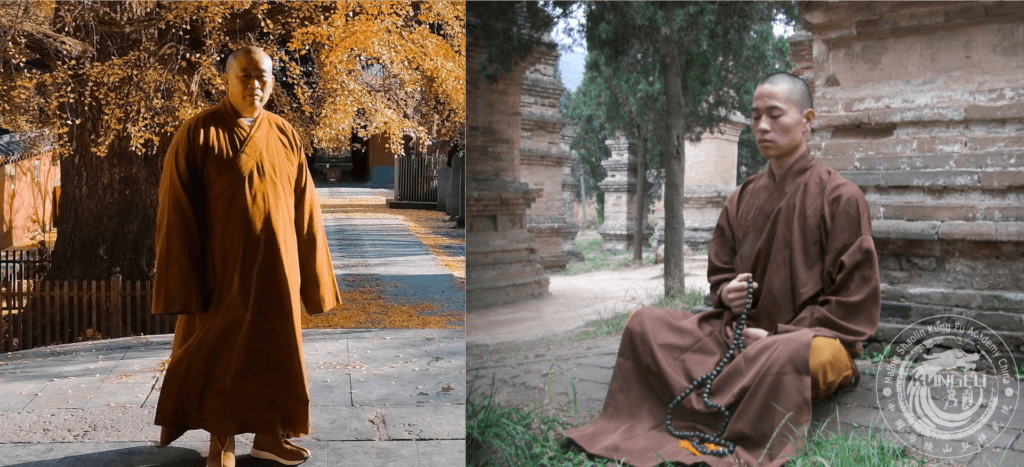
- Warrior Monks: Brown robes are often worn by senior Shaolin warrior monks, indicating their advanced level of training and higher rank within the monastic hierarchy. These monks have typically dedicated many years to mastering the martial arts and embodying the principles of Shaolin philosophy. Wearing brown can also denote that the monk has achieved a significant level of proficiency and leadership within the community, often responsible for teaching and guiding younger monks.
- Literary Monks: Similar to the warrior monks, Buddhist Literary monks at the Shaolin Temple may wear brown robes to signify their seniority, experience, and spiritual attainment. This color is associated with monks who have taken on more responsibilities or hold positions of authority within the temple.
Orange Robes:
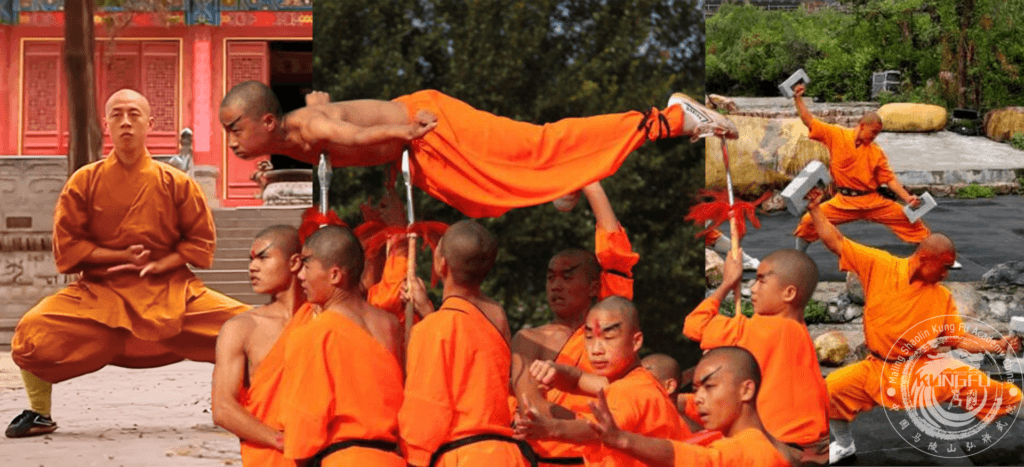
- Warrior Monks: The orange uniforms are distinctive to the Shaolin warrior monks, particularly during martial arts demonstrations, performances, and intensive training sessions. The bright orange color is associated with energy, vitality, and the dynamic aspect of their martial arts practice.
Overall, the different colors of clothing at the Shaolin Temple help distinguish between the Buddhist Literary monks and the Warrior monks, as well as indicating the monks’ stages of training or their roles within the monastic community. The color distinctions emphasize the unique combination of spiritual and martial traditions that define the Shaolin Temple. So how does the untrained eye tell them apart if they wear the same colors? It’s in the face! Warrior monks will often have a fierce gaze and resting face while Buddhist monks have a more gentle demeaner.
Summary
In summary, while there may be some differences in emphasis and practice between Shaolin monks and other Buddhist monks, they share a common commitment to Buddhist principles of compassion, mindfulness, and ethical conduct. Both groups strive to lead lives of simplicity, discipline, and spiritual cultivation in pursuit of enlightenment and liberation from suffering.
The Shaolin Temple stands as a unique convergence of Buddhist spirituality and martial prowess, housing both wénsēng (Literary monks) and wǔsēng (Warrior monks). This dual presence underscores the temple’s holistic approach to enlightenment, blending rigorous physical discipline with profound spiritual practice. The distinction between wénsēng and wǔsēng at the Shaolin Temple highlights the multifaceted nature of this sacred place, where monks can choose paths that align with their spiritual and physical aspirations.
The journey to becoming a wénsēng at Shaolin is varied, from seasoned Warrior monks transitioning to a more contemplative life, to individuals seeking refuge from worldly disillusionments, or even historical instances of the temple providing sanctuary to those in need. Life at the temple fosters a sense of unity and mutual respect, as both wénsēng and wǔsēng come together for morning prayers, ceremonies, and daily chores, creating a harmonious balance between their distinct roles.
Rites of passage such as 受戒 (shoujie) and 拜师 (baishi) mark significant milestones in the lives of these monks, solidifying their commitments and roles within the temple community. The significance of robe colors further reflects the rich traditions and structured hierarchy within the temple, symbolizing the monks’ dedication and status.
The Shaolin Temple remains a beacon of spiritual and physical cultivation, drawing individuals who seek a profound, transformative journey. Its unique integration of meditation, martial arts, and communal living continues to inspire and attract practitioners from all walks of life, preserving the timeless legacy of Shaolin for future generations.

